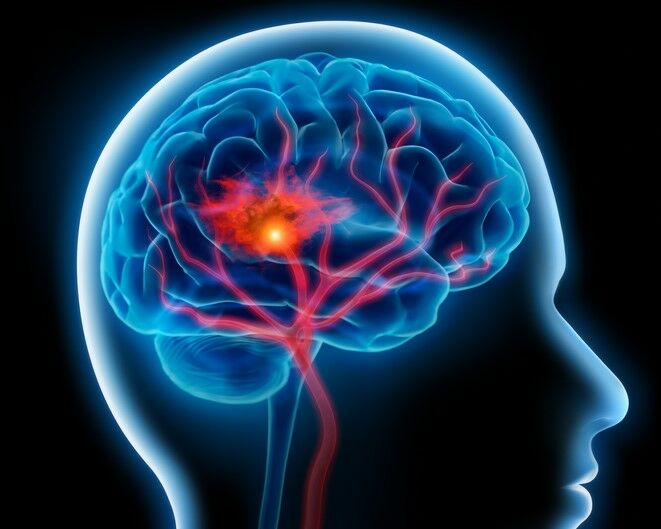Have you ever known someone that had a stroke and you wonder, what happened? Many of us have some knowledge about strokes because of events that have occurred during our lives. Maybe a grandparent, an aunt, an uncle, a friend — or even an immediate family member — has suffered a stroke. What do you know about strokes? After a stroke, we have seen some of the terrible effects it may have on the person: complete or partial paralysis, difficulty speaking, memory loss, inability or difficulty in walking. They may require help in eating, dressing and/or bathing, or a stroke may have even caused death.
In fact, much of our knowledge about strokes involves the end result of a stroke. But do we really know what caused a stroke? Do we know what, if anything, could have been done to treat the person once symptoms start? Do we know if the doctors or the hospital did everything necessary to ensure that the person would have the best recovery?
WHAT IS A STROKE?
Very simply, a stroke occurs when there is a disruption of blood supply to the brain. Continuous and adequate blood flow is vitally important because blood carries oxygen to all the tissues in our body. The brain (and spinal cord) is extremely vulnerable to permanent damage when there is an inadequate, or absent, oxygen supply. When blood flow to an artery is disrupted, the supply of oxygen is diminished to that area. That can rapidly cause injury and permanent damage.
ARE THERE DIFFERENT TYPES OF STROKES?
Medical literature has divided strokes into three types:
1) Ischemic — [caused by a clot that forms inside a blood vessel (called a thrombus) or a clot that is carried through the bloodstream until it becomes wedged in a smaller blood vessel (called an embolus). About 87% of all strokes are ischemic strokes. They are “blockages”].
2) Hemorrhagic — [occurs when an artery to the brain leaks blood or becomes ruptured and spills blood into the surrounding area. They are “bleeds”].
3) TIA — [transient ischemic attack. Often called a “mini-stroke” because blood flow to the brain is blocked for a short time – less than 5 minutes — and then the symptoms stop. It is an indicator that a full-blown ischemic stroke may occur in the near future].
WHAT ARE THE SIGNS AND SYMPTOMS OF A STROKE?
Any one or more of the following can be a sign or symptom of a stroke:
- Numbness or weakness in the face, arm or leg, especially one sided
- Slurring or difficulty in speech, confusion or difficulty understanding
- Sudden trouble seeing in one or both eyes, or blurring of vision
- Sudden trouble walking, dizziness, loss of balance or coordination
- Sudden severe headache, with no known cause
WHAT CAN BE DONE IF SOMEONE BEGINS TO HAVE SYMPTOMS?
A stroke is a medical emergency; get the person to an emergency room immediately. The passage of time from the start of symptoms until treatment begins is the most important factor for the stroke victim to end up with a good recovery. It can mean the difference between total disability or a functional life, between requiring 24 hour/day care or total independence, and between life or death. There are a number of different treatments for stroke, but all treatments require that they be carried out early for a good outcome.
For ischemic strokes, there is a medication that can dissolve clots (tissue plasminogen activator, or “tPA”). It must be given within 3 hours (or in some instances 4 ½ hours) from the beginning of symptoms or it will be too late because permanent damage has occurred. Another innovation is a “stent retriever,” which can be snaked up blood vessels leading to the brain to pull out large clots. For TIAs, blood thinning medications, antiplatelet medications and/or aspirin is often used to avoid a full stroke. Hemorrhagic strokes, depending upon the cause and the severity, may require surgery or intense therapy in an ICU. All of this has to be carried out by qualified doctors and hospitals.
MEDICAL MALPRACTICE AND STROKES
In medicine there is a saying: “TIME IS BRAIN.” What does that mean? Very simply, the longer treatment is delayed, the more damage to the brain will occur. For the well-being of the patient, the diagnosis of stroke, and the type of stroke, must be made quickly, and treatment must begin immediately. Every minute counts.
Too often, a person is brought to the emergency room with symptoms of a stroke only to be discharged and told that all is well or that their symptoms will pass. Then, after discharge, the symptoms continue, permanent damage occurs, their condition worsens and the patient is beyond any help. It may be that a complete neurological examination was not done, or testing was inadequate or not done, or radiological films were not read correctly, or the symptoms were dismissed as not serious. At other times, while in the emergency room, the victim is caused to wait because stroke symptoms are not recognized when immediate action is required. Sadly, permanent injury and life-long disability may have been avoided with prompt diagnosis and treatment.
The law firm of Sanocki Newman & Turret, LLP has been successful in litigating personal injury and wrongful death cases involving medical malpractice and strokes. If you are the spouse, child, or parent of a family member who was injured or has died as a result of medical negligence, you can seek compensation for pain and suffering, as well as economic loss, which you and your other family members may be entitled. Please contact us for a consultation at (212) 962-1190.


